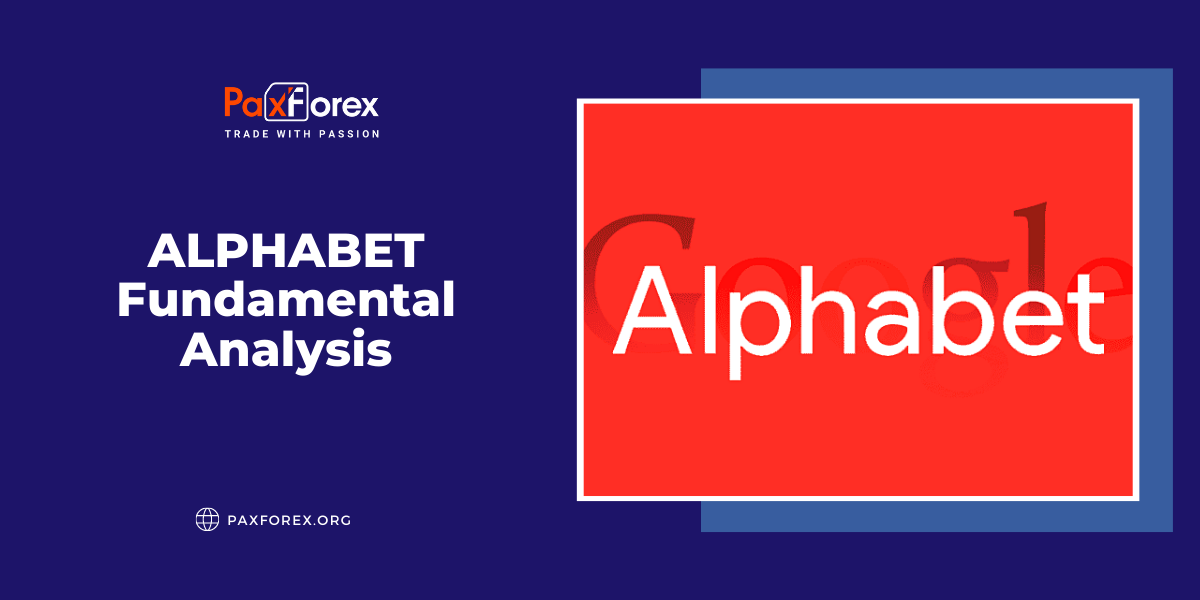
Source: PaxForex Premium Analytics Portal, Fundamental Insight
Last week, the Nasdaq Composite managed to break a seven-week losing streak, securing its first positive trading week since early April. Even despite last week's rally, the Nasdaq is still in the bear market territory (it is down 25.3% from its all-time highs set in November). One stock that is falling at the same time as the Nasdaq is tech giant Alphabet, the parent company of Google. Stock prices are down about 23.9% from their November highs.
Long-term investors looking for bargains usually look out for great companies trading in the bear market territory. So is it time to buy Alphabet stock? Let's look at two reasons to buy the stock now and one reason investors may want to wait.
First, the digital advertising market is huge. The Interactive Advertising Bureau (IAB) estimates that it will be worth $189 billion in 2021. By comparison, the entire U.S. auto market will be less than $83 billion in 2021, according to one estimate. What's more, the IAB reports that the digital advertising market is up 35% in 2021 compared to 2020.
In 2022, Google, thanks to its various advertising resources, has the largest share of the digital advertising market, almost 28%, while its main competitor, Meta Platforms, has about 24% market share. And while Amazon is projected to increase its share of the digital advertising market to 14.6% by 2023, Alphabet is still the leading company in digital advertising and should benefit from 35% growth in that market.
Moreover, the bulk of Google's advertising revenue (about 70%) comes from its search division, which sells highly targeted ads based on Google search results. The company also has a lucrative advertising business built on Gmail, Google Maps, and the Google Play Store. If that's not enough either, Google's YouTube and YouTube TV divisions offer room for video advertising.
One of the evaluation metrics we love is the price-to-earnings-to-growth (PEG) ratio. To calculate this ratio, you have to divide a company's price-to-earnings ratio by its growth rate. So, for a company with a P/E ratio of 20 and sales growth of 20% for the year, the PEG ratio would be 1.
While it is difficult to create a hard and fast rule of thumb, a PEG ratio of less than 1 usually indicates that a company is undervalued. As you can see, Alphabet's PEG ratio is 0.43, well below its three-year average PEG ratio of 0.95 and very close to 1.
If anything is holding Alphabet (and many other stocks) back right now, it's the fear of a recession. If the economy goes into recession in the next 12 to 18 months, companies will cut costs, and one of the first items they will cut will be advertising.
Snap hit the headlines two weeks ago when it announced in advance that revenues and profits were down in the second quarter. This shocked the market since Snap had released its guidance for the second quarter just four weeks earlier. The rush to pre-announcement showed that the advertising market (at least for Snap) deteriorated very quickly in April and May.
However, there is also a reason to hold off on buying Alphabet - the steep decline in advertising revenue that Snap had foreshadowed. If the downturn in the advertising market turns out to be real, Alphabet may have difficulty meeting its own earnings and revenue projections in the short term, which could cause prices to fall further. This could give long-term investors an even better entry point later this year.
As long as the price is above the 2250.00 level, follow the recommendations below:
- Time frame: D1
- Recommendation: long position
- Entry point: 2338.24
- Take Profit 1: 2460.00
- Take Profit 2: 2640.00
Alternative scenario:
If the level of 2250.00 is broken-down, follow the recommendations below:
- Time frame: D1
- Recommendation: short position
- Entry point: 2250.00
- Take Profit 1: 2190.00
- Take Profit 2: 2040.00













